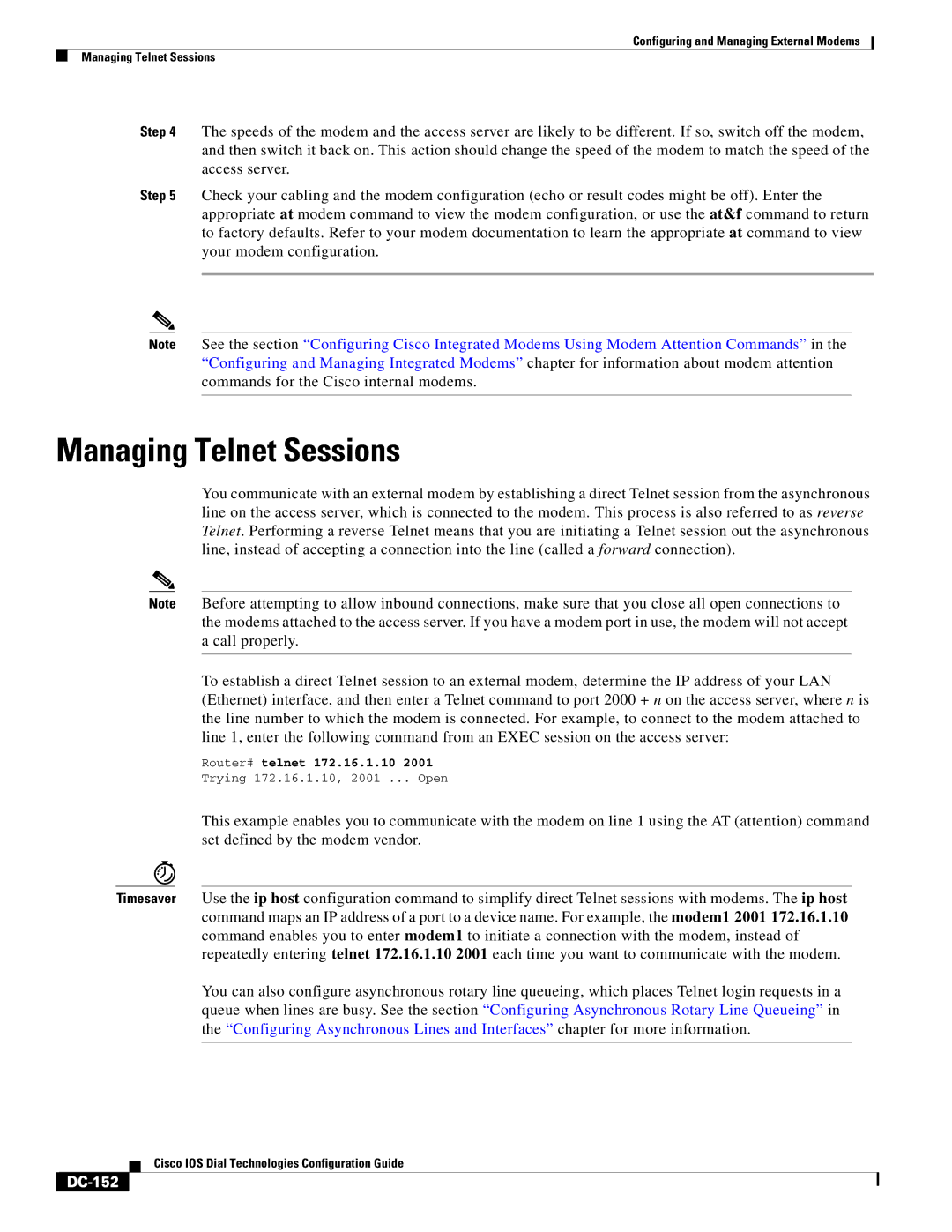
Configuring and Managing External Modems
Managing Telnet Sessions
Step 4 The speeds of the modem and the access server are likely to be different. If so, switch off the modem, and then switch it back on. This action should change the speed of the modem to match the speed of the access server.
Step 5 Check your cabling and the modem configuration (echo or result codes might be off). Enter the appropriate at modem command to view the modem configuration, or use the at&f command to return to factory defaults. Refer to your modem documentation to learn the appropriate at command to view your modem configuration.
Note See the section “Configuring Cisco Integrated Modems Using Modem Attention Commands” in the “Configuring and Managing Integrated Modems” chapter for information about modem attention commands for the Cisco internal modems.
Managing Telnet Sessions
You communicate with an external modem by establishing a direct Telnet session from the asynchronous line on the access server, which is connected to the modem. This process is also referred to as reverse Telnet. Performing a reverse Telnet means that you are initiating a Telnet session out the asynchronous line, instead of accepting a connection into the line (called a forward connection).
Note Before attempting to allow inbound connections, make sure that you close all open connections to the modems attached to the access server. If you have a modem port in use, the modem will not accept a call properly.
To establish a direct Telnet session to an external modem, determine the IP address of your LAN (Ethernet) interface, and then enter a Telnet command to port 2000 + n on the access server, where n is the line number to which the modem is connected. For example, to connect to the modem attached to line 1, enter the following command from an EXEC session on the access server:
Router# telnet 172.16.1.10 2001
Trying 172.16.1.10, 2001 ... Open
This example enables you to communicate with the modem on line 1 using the AT (attention) command set defined by the modem vendor.
Timesaver Use the ip host configuration command to simplify direct Telnet sessions with modems. The ip host command maps an IP address of a port to a device name. For example, the modem1 2001 172.16.1.10 command enables you to enter modem1 to initiate a connection with the modem, instead of repeatedly entering telnet 172.16.1.10 2001 each time you want to communicate with the modem.
You can also configure asynchronous rotary line queueing, which places Telnet login requests in a queue when lines are busy. See the section “Configuring Asynchronous Rotary Line Queueing” in the “Configuring Asynchronous Lines and Interfaces” chapter for more information.
Cisco IOS Dial Technologies Configuration Guide
